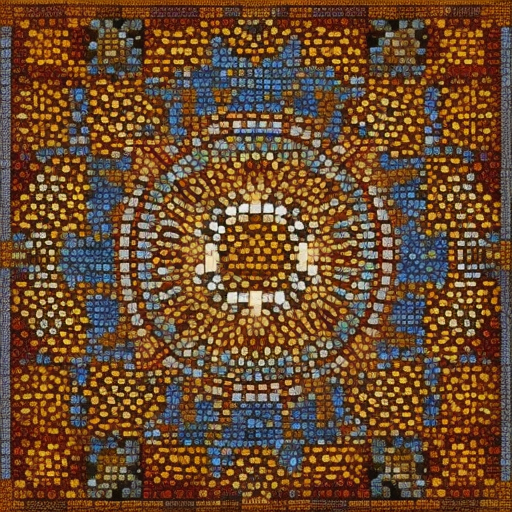Summary:
Byzantine art refers to the artistic style that emerged in the Byzantine Empire, which lasted from the 4th century CE to the fall of Constantinople in 1453. It was heavily influenced by the early Christian art of the Roman Empire and incorporated elements from various cultures, including Greek, Roman, and Middle Eastern. Byzantine art is characterized by its religious subject matter, use of gold and vibrant colors, and emphasis on spiritual symbolism. It encompassed a wide range of mediums, including mosaics, frescoes, icons, manuscripts, and metalwork.
Origins and Influences:
Byzantine art developed as a continuation of the early Christian art of the Roman Empire. It was influenced by the artistic traditions of the ancient Greeks and Romans, as well as the artistic styles of the Middle East and North Africa. The Byzantine Empire’s strategic location at the crossroads of Europe and Asia allowed for the exchange of ideas and artistic techniques. The rise of Christianity as the state religion also played a significant role in shaping Byzantine art, as it became the primary subject matter for artistic expression.
Characteristics of Byzantine Art:
One of the defining characteristics of Byzantine art is its religious focus. Byzantine artists sought to convey the spiritual and divine nature of their subjects, often depicting religious figures such as Christ, the Virgin Mary, and saints. The use of gold and vibrant colors was another prominent feature of Byzantine art. Gold was seen as a symbol of divine light and was used extensively in mosaics, icons, and manuscripts. The colors used in Byzantine art were rich and symbolic, with each color carrying specific meanings.
Mediums and Techniques:
Byzantine art encompassed a wide range of mediums and techniques. Mosaics were a popular form of artistic expression, with intricate designs created by arranging small pieces of colored glass, stone, or ceramic tiles. These mosaics adorned the walls and ceilings of churches and palaces, depicting religious scenes and figures. Frescoes, which involved painting on wet plaster, were also commonly used to decorate the interiors of buildings.
Icons, religious images typically painted on wooden panels, were another important medium in Byzantine art. Icons played a central role in religious worship and were believed to possess spiritual power. Manuscripts, particularly illuminated manuscripts, were highly valued for their intricate illustrations and calligraphy. Metalwork, including gold and silver objects such as chalices and crosses, showcased the skill and craftsmanship of Byzantine artisans.
Legacy and Influence:
Byzantine art had a lasting impact on the art and culture of subsequent periods. Its influence can be seen in the art of the medieval West, particularly in the development of the Romanesque and Gothic styles. The use of gold and vibrant colors, as well as the emphasis on religious subject matter, continued to be prominent in Western art. Byzantine icons also influenced the development of religious art in Eastern Orthodox Christianity.
The legacy of Byzantine art extends beyond Europe. It influenced the art of the Islamic world, particularly during the Abbasid and Ottoman periods. Byzantine artistic techniques and motifs can be seen in Islamic architecture, ceramics, and manuscript illumination. The Byzantine Empire’s cultural and artistic achievements also played a significant role in preserving and transmitting ancient Greek and Roman knowledge to future generations.
In conclusion, Byzantine art emerged as a distinct artistic style in the Byzantine Empire, drawing influences from various cultures and emphasizing religious subject matter. Its use of gold and vibrant colors, along with its intricate mosaics, icons, manuscripts, and metalwork, created a rich and visually stunning artistic tradition. The legacy of Byzantine art can be seen in the art and culture of subsequent periods, both in Europe and the Islamic world.












